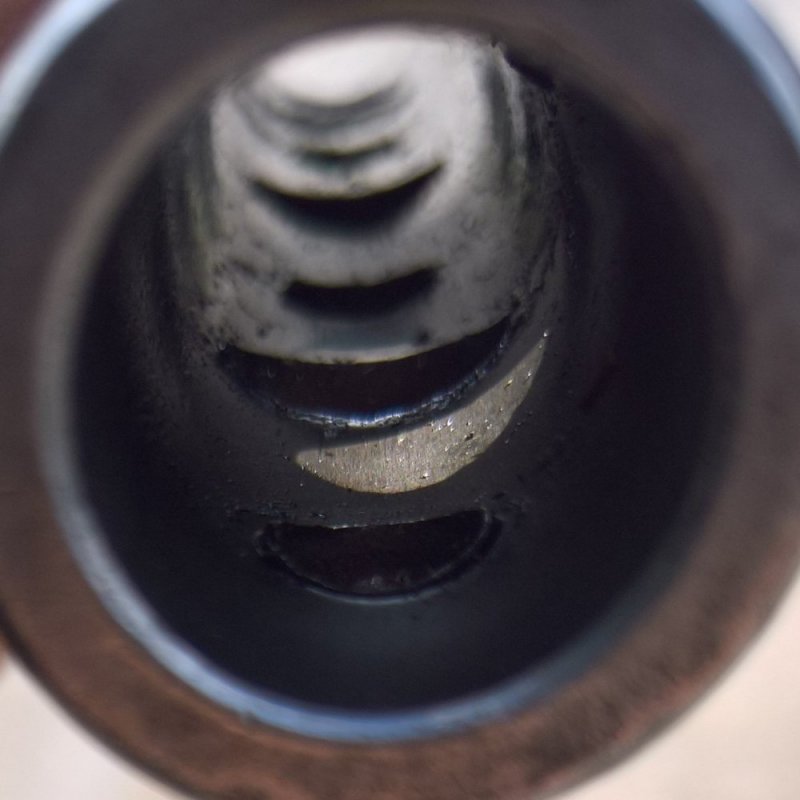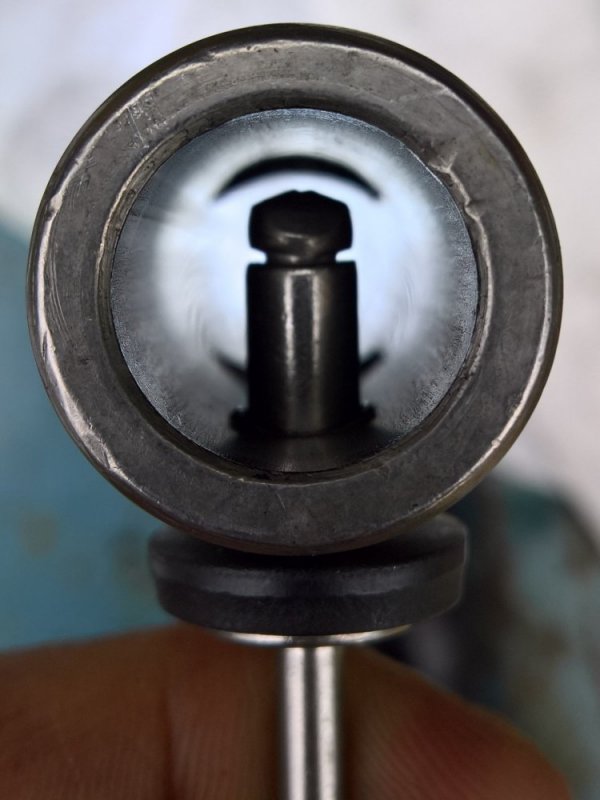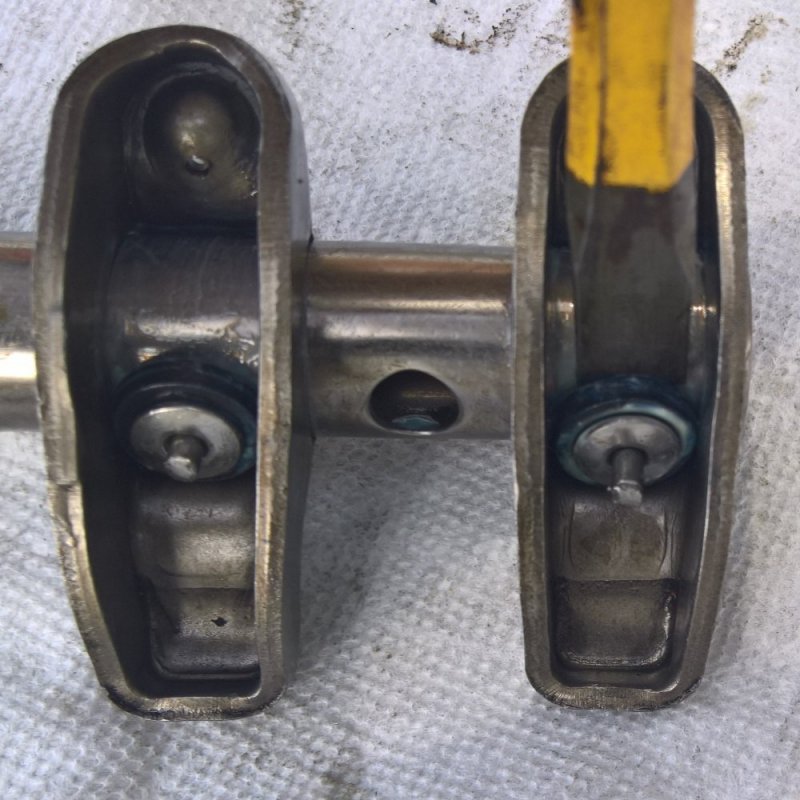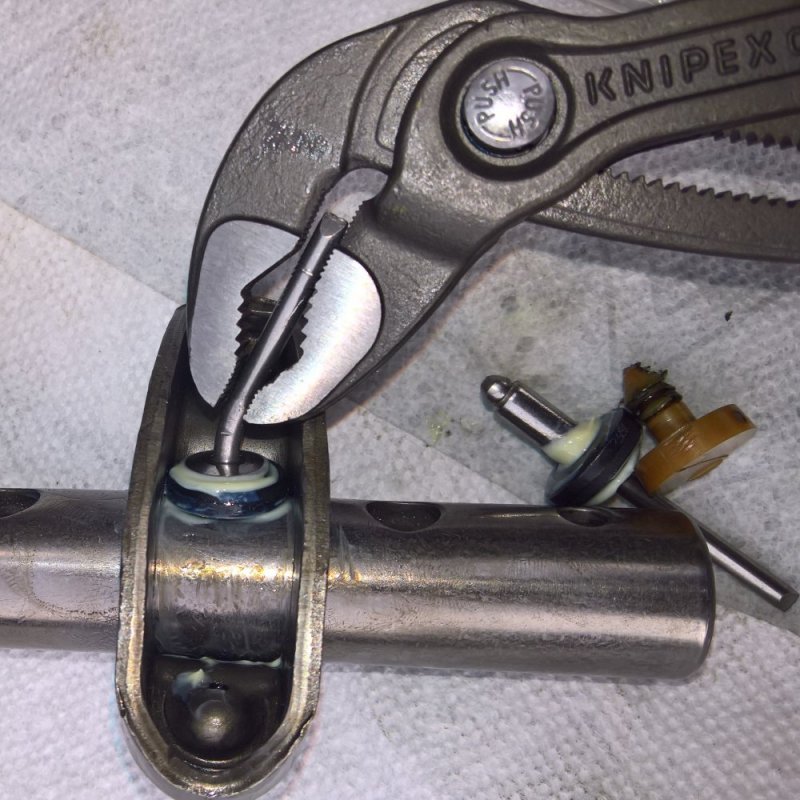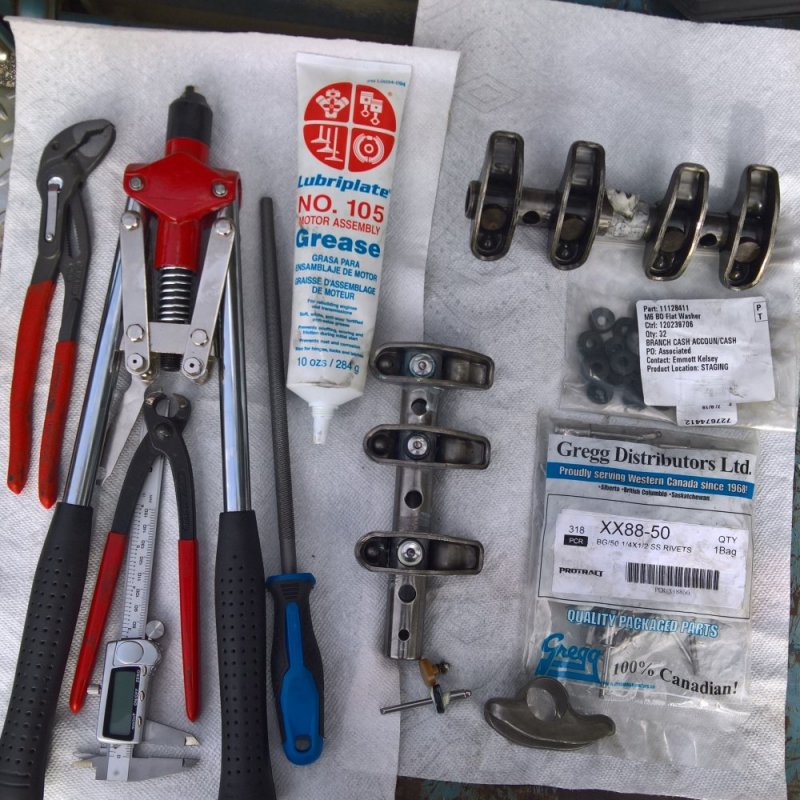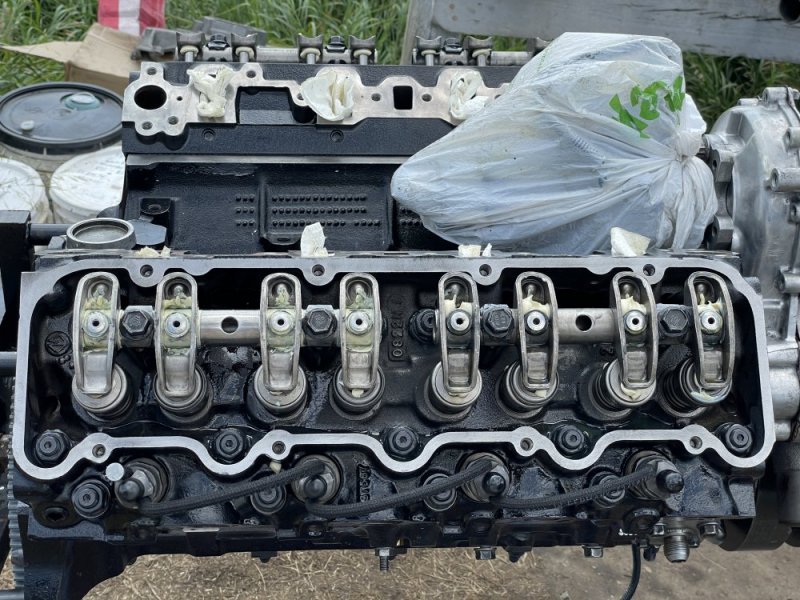The stock 6.5 rocker is held in place by a nylon button. I had one break on me, now I'm replacing the piston rings in cylinder 6 because of it. No way I'm putting nylon in again. I could have gone with expensive HS roller rockers, or the bolt method, but I thought I'd try something similar to what Peninsular uses - rivets!
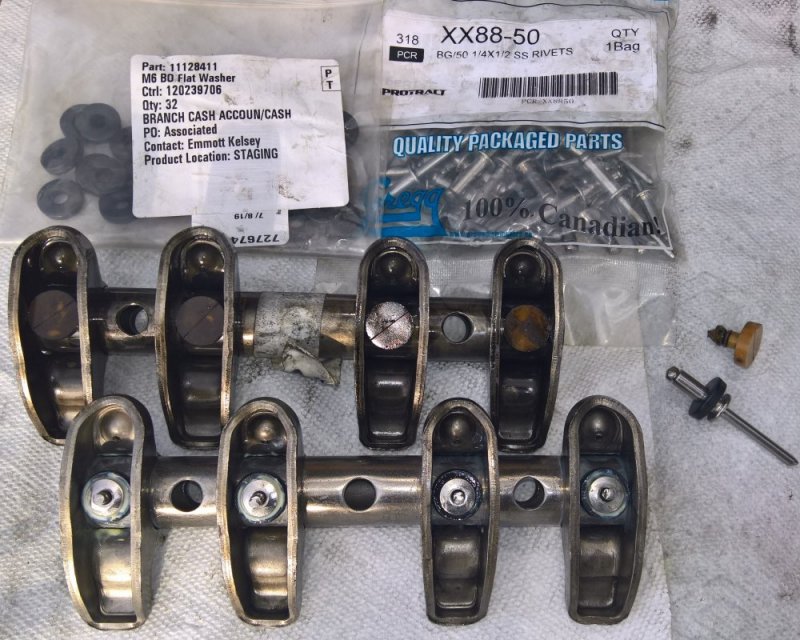
It should be about a 3 hour job to do all 16 rockers.
Here's what you need:
If you fasten the rivet too tight you can use a hammer & chisel lift the washer then tap back on the rivet then the washer should rotate freely. Oh and oil everything up first. I used engine assembly lube.


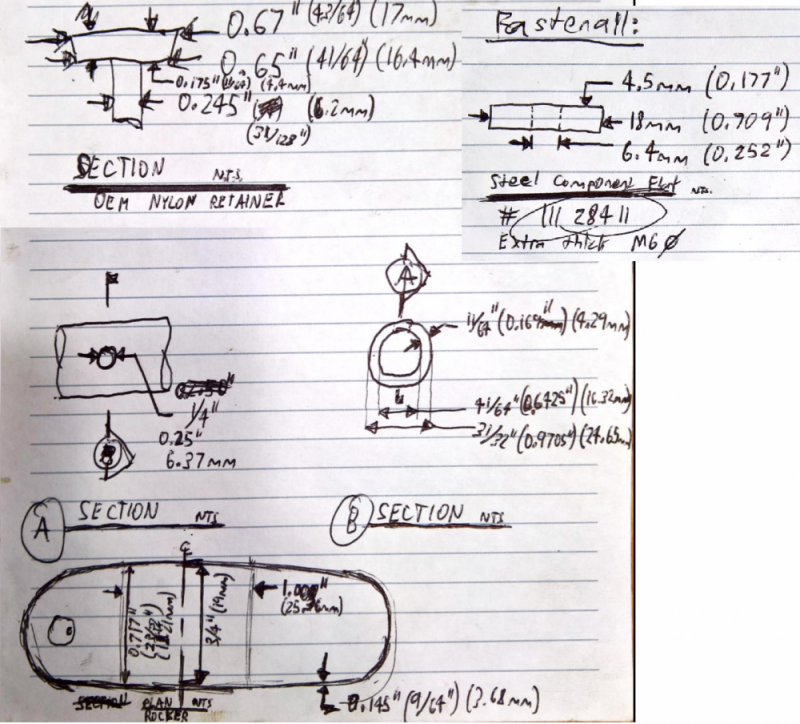
And for tools:
Step 2 - De-burr the inside of the tube where the factory drilled the holes for the retainers, I used a file for a bit then got a dremel tool, that tube is hard AF. I cleaned out the shavings like a gun barrel then rinsed it. Step 3 - Slide on the rocker and lube up
Step 4 - Insert pop rivet and washer. The washers are concave (shaped like a crescent moon) I shaped the arch down so it would rotate easier. Note that the thick washers also have a slight taper, to match with the taper direction of the stock rivet you would have to face it the other way from how I did it. Your call. Remember to put the rocker in before the retainer! Step 5 - Fasten! But don't pop the rivet! Go until you see the expansion of the rivet just about touching the inner wall of the cylinder. Double check you can rotate the washer on the other side. When it starts to feel snug you're done. Step 6 - go grab a beer.
Step 7 - You were an idiot and you over pulled on the rivet and now the washer won't rotate. That's ok! Just use a cold chisel & hammer to wedge the nut up a bit, tap down on the rivet, then the washer should be freed up. Step 8 - Cut off the excess rivet stem. I used an HD wire cutter to notch/weaken an area the stem close to the washer then pliers to bend/break it off. File the end if you don't like sharp edges, but file upside down so the shavings don't fall into the rocker.
Rinse and repeat.
I checked to see if the stem left inside the rivet would fall out by hammering on the top, it didn't budge so it's not going anywhere.

It should be about a 3 hour job to do all 16 rockers.
Here's what you need:
- 1/4" by 1/2" long stainless steel rivets (NOT ALUMINUM!) - available in pack of 50 at Gregg Distributors (PN XX88-50) They are 0.245" in diameter and expand to 0.335" (~40%). The hole they go inside is exactly 1/4".
- Extra thick Black Iron M6 washer - Available at Fastenall (PN 11128411) - Sold per.
If you fasten the rivet too tight you can use a hammer & chisel lift the washer then tap back on the rivet then the washer should rotate freely. Oh and oil everything up first. I used engine assembly lube.



And for tools:
- Big-ass rivet gun (these things are built like bolt cutters)
- Cylinder File or Dremmel tool
- Pliers
- HD wire cutters
- Flat cold chisel
- Hammer
Step 2 - De-burr the inside of the tube where the factory drilled the holes for the retainers, I used a file for a bit then got a dremel tool, that tube is hard AF. I cleaned out the shavings like a gun barrel then rinsed it. Step 3 - Slide on the rocker and lube up
Step 4 - Insert pop rivet and washer. The washers are concave (shaped like a crescent moon) I shaped the arch down so it would rotate easier. Note that the thick washers also have a slight taper, to match with the taper direction of the stock rivet you would have to face it the other way from how I did it. Your call. Remember to put the rocker in before the retainer! Step 5 - Fasten! But don't pop the rivet! Go until you see the expansion of the rivet just about touching the inner wall of the cylinder. Double check you can rotate the washer on the other side. When it starts to feel snug you're done. Step 6 - go grab a beer.
Step 7 - You were an idiot and you over pulled on the rivet and now the washer won't rotate. That's ok! Just use a cold chisel & hammer to wedge the nut up a bit, tap down on the rivet, then the washer should be freed up. Step 8 - Cut off the excess rivet stem. I used an HD wire cutter to notch/weaken an area the stem close to the washer then pliers to bend/break it off. File the end if you don't like sharp edges, but file upside down so the shavings don't fall into the rocker.
Rinse and repeat.
I checked to see if the stem left inside the rivet would fall out by hammering on the top, it didn't budge so it's not going anywhere.
Attachments
Last edited:

